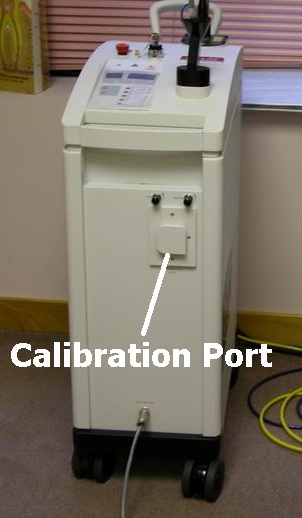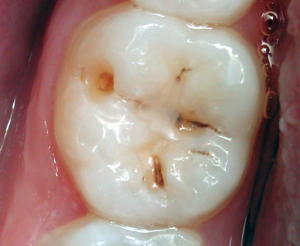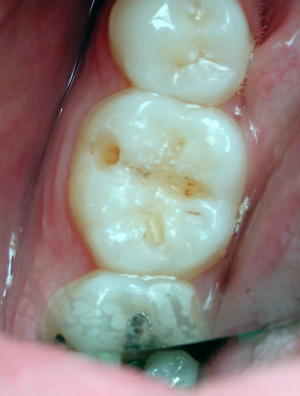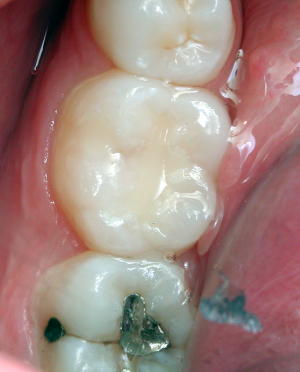Forum Replies Created
-
AuthorPosts
-
2thlaserSpectatorHi Guys,
For what it’s worth, I have never heard anyone talk of 100% success without anesthesia. Honestly, I have had to anesthetize 8 people since last Feb. I counted over 2000 procedures where I haven’t had to use any anesthetic. The answer seems to be patience. Defocus, and have patience with the “numbing” effect. It’s not perfect, like Pat says, and some “feel” something. Never promise it won’t hurt at all, BUT, always ask afterwards, would they have wanted the “shot” and “drill” or the laser. I do ask, and so far, 100% have said, LASER! No joke. If you use your laser alot, you will get proficient, if you don’t it’ll seem like it takes forever to get the learning curve down. HAVE PATIENCE. You will get the curve down, and when you do, it’s incredible. My 2 cents Montanan’s worth! Hope everyone is having a great New Year so far!
Mark
Janet CenturySpectatorThanks Glenn. Today (before reading your post) I did my first herpetic lesion. Patient came in for bonding and had a very painful cold sore on the lower lip. I grabbed the erbium (because it was in the room – glad to see you recommend that first). I used it set at 10 Hz, 35mJ. She felt it a little from time to time, but I would just back off and then go closer.
Afterwards, all she could say was “Oh my God, Oh my God”. Her pain was completely gone. I’ll call her tomorrow and see how it’s going.
On the human side, I was completely jazzed to help someone like this and feel so appreciated. On the business end, it kept a 蹜 appointment from cancelling.
Having fun,
Janet
PatricioSpectatorMark,
Great advice. patience, patience, patience. I agee, I ask every person how they like the laser experience and I have not had one person who preferred the old way over the laser. I will work on the patience end of the process.
Pat
2thlaserSpectatorOne other thing. Lasers are very sensitive devices. They change in their calibration periodically. IF you are having some sensitivity issues, have the technicians come out and reset your PK’s. This morning, my Biolase tech just happened to be in the area, and I have been getting a touch more sensitivity lately. We set these a number of months ago, and the values were fine. We found out this morning, that my laser has gotten a bit “hot”, so it could be in the software, or wherever, but that explains why I have had a slight difference. I bet I see a difference with the new calibrations. Laser dentistry is so exciting, and new, and we just have to put up with the learning we need to do each time we pick up the handpiece. Not the same as a turbine needing to be replaced huh? I will let you all know how the new calibrations work out. Really, Biolase has been great in their support, and I can’t say enough. I really haven’t had much problems at all with my Waterlase, this is very minor, but again, another part of the learning curve for all of us.
Glenn, I know your unit has variable Hz settings, BUT with the power adjustments, do you have to, or have you had, your unit calibrated every once in a while, and if so, have you seen any variations in Wattage output after a few months/year of use? We have been advised to have our units calibrated at least once per year, I have mine done more often, because I use it for ALL procedures I can, it’s my workhorse, so I feel the need to check it now and again. This is the only time I have had to have it reset (it got a bit hotter in the Wattage settings). Just wondering.
Hope everyone is having a great Year!!
Mark
Robert GreggParticipantHi Ron,
This is a GREAT question!
I know from where and whence the phrase “use the least amount of energy to reach the treatment objective” came from.
It came from the early days of pulsed Nd:YAG clinical laser use (1990) where we had no idea of light dosimetry in tissues for anything. So the idea was advanced that the “least” amount of energy to achieve what we “thought” was the treatment objective was coined and advanced–chiefly by Professor Doctor Joel White at UCSF and his like-minded laser dentist colleagues in the ALD with Educator Status (which I have as well but don’t agree on this point).
For new laser users, this laser Rule of Thumb is a “nice” admonition…but not necessarily safe, accurate, efficient, nor optimally therapeutic. Sure, you can see some “nice” results with that Rule of Thumb, but we can be more predictable and knowledgeable about the treatment results than that!
In order for that laser “Rule of Thumb” to apply, one needs to FIRST define what the Treatment Objective is.
In herpetic lesions, the T.O. might be:
a. ease the itching and pain
b. reduce swelling
c. reduce inflammationOK STOP! Then follow the protocol you used.
If you also want to:
d. keep the itching, swelling, inflammation and pain from returning
e. kill the maximum amount of live virus
f. dentature pathologic proteins
g. inactivate epithelial tags necessary for viral replication
h. a. b. c.
i. d. e. f. g. h. i
j All the above
k. None of the aboveIf “j” is your answer, then a new treatment protocol–and light and time intensity–is indicated…..
In our training we advocate that the treatment objective is to put the OPTIMAL, not the LEAST nor the MOST amount of energy to reach the treatment objective, such that no extended lateral tissue injury ocurrs. Sometimes that means our powers are VERY high, but our tissue interactions times are very short. Sometimes it means our treatment times are longer, and our energy and intensity are high, but our effects are diffuse, wide and deep. Remember your hard tissue analgesia settings.
Herpetic lesions require a light intensity sufficient to have the live virus killed, the inflammatory proteins denatured, and the epithelial tags inactivated (so no new lesions recur in that same treatment site).
One more thought:
The light intensity (light dose) that you are able to put in using EMLA is actually MORE intense and “harmful” than a defocused application which uses more time and less energy to the surface and diffuses deeper into tissue (like you do when you use your erbiums to create analgesia in teeth by “painting” the tooth at 6 watts and at distance).
Also, local anesthetics penetrate skin and mucosa and enter the blood stream in high concentrations. I’m not shy about using it, but for the sake of the “safety” arguement, there is a higher chance of anesthetic toxicity with topical versus local. So I don’t see the safety aspect of using ELMA and close proximity irradiation from that aspect.
OK, how do you caluculate?
By not using the ELMA and monitoring the patient’s response. It takes about 30-60 seconds for the lesion to become numb for the patient, then another 3-4 minutes per centimeter to complete the treatment. (Pssst! Knowing that your lasers create analgeisa in pulp tissue, why not try it for soft tissue boo boos?!)
It also helps to know the energy at the fiber tip and have a power meter and joule counter on the laser–but that would make it too easy!!:biggrin:
Thanks for the question!
Have a great weekend!
Bob
(Edited by Robert Gregg at 7:58 pm on Jan. 10, 2003)
Robert GreggParticipantHi All,
Good comments here.
Mark, you are right on with the calibration aspect of erbium lasers. My guess would be the optics/mirror alignment going out due to thermal lensing.
A far as jetsfan’s patient:
OCCLUSION.
When they are that isolated in location and symptoms and that specific in pain–OCCLUSION. It’s probably a cusp tip that won’t even mark paper very well. Use green occlusal indicating wax and see…….
My 2 watts (very funny Mark C)
Bob
Glenn van AsSpectatorHi Mark………guess why I like the Continuum unit.
It has a CALIBRATION PORT for self calibration of the fiber which I do around once per week.
Its great to know how your fiber is. Mine started at around 81% and now is around 73% and will be around 65 % when it needs replacement. The power drops and the unit recalibrates itself. Is this cool or what?
glenn

AnonymousParticipantQUOTEQuote: from Robert Gregg on 7:47 pm on Jan. 10, 2003In our training we advocate that the treatment objective is to put the OPTIMAL, not the LEAST nor the MOST amount of energy to reach the treatment objective, such that no extended lateral tissue injury ocurrs. Sometimes that means our powers are VERY high, but our tissue interactions times are very short. Sometimes it means our treatment times are longer, and our energy and intensity are high, but our effects are diffuse, wide and deep. Remember your hard tissue analgesia settings.
(Edited by Robert Gregg at 7:58 pm on Jan. 10, 2003)
Thanks for the response Bob.
I hope after this post you’re not sorry you responded, because now I have more questions 😉
How do I figure out the optimal energy per procedure? I see what you’re saying with the herpetic lesion tx and why you’d want to accomplish e,f & g, but how do would know before you did the tx, that the longer defocused tx results in e,f & g and not deeper more intense effect because of longer absorption time?
Is this because of the shape of the ‘irradiated volume’ of focused vs. defocused?
If I understand desensitization, the defocused time is to get deeper penetration and thus anesthesia effect and then when you move into focus you are actually trying to affect the surface. Then it would seem to follow that, with the herpetic lesion tx you outlined the primary objective is to affect the deeper tisue with a minor emphasis on the surface, correct? and likewise with a fibroma removal the primary objective , once anesthetic effect is in place, is to focus and keep the energy more at the surface to cut, correct?
So if the focus vs. defocused determines the primary location of the effect (correct?) How do you determine time? Patient response (pain/no pain, tissue color change,etc)?
When I first tried amalgam removal I thought about Mark being able to do crown preps w/o anesthesia and wondered if the same settings would allow enough anesthesia effect to use the high speed to remove amalgam – fortunately it worked, is this the kind of adaptation you need to do to figure these optimal settings out? or is there a ‘rule of thumb’?
Thanks for your willingness to share your knowledge and experience. Once again you’ve helped me take some steps forward in my lasing,
2thlaserSpectatorGreat answer Glenn. I would like that too. I am going to suggest it to Biolase. My fiber is a year old, and is still running unbelievable. The unit was a bit “hot” as I said in my earlier posts. After calibration, its humming along. I just love laser dentistry, it is the best thing that has happened to me professionally period. Secondly, is the friendship of you guys here. Thanks for all the input and education we share. I have a few other interesting things to post sometime soon. Just working on them. Have a great weekend everyone.
Mark
Robert Gregg DDSSpectatorGood Morning Ron,
Why do I feel like a fish being reeled in?
To answer your questions:
Measurements, histology, research, study, experience.
Yes.
Correct.
Ummm….correct.
(correct)
Right!
Absolutely.
By George, I think you’ve got it!
:biggrin:
Bob
Can I come back later and place the quotes where they belong for the answers?
whitertthSpectatorroutine class 1 restored with renamel flowable…5.5 watts no anesthesia…..remaining discolored dentin wasnt carious… just curious what do u guys do with discolored dentin? remove or leave? hope u enjoy



PatricioSpectatorOK Class,
Two Questions.
1. Can very sensitive teeth be desensitized after using a local anesthetic?2. If you feel you need to use local anesthetic for a particlular patient how long does it take before you begin with the laser? In the past as a general guide we have used 4 minutes for restorations, 6 for crown preps and 10 for extraction. I find it takes only a minute or two before you can begin with the laser.
Mark is excused from this one. We would have to wait to long for his results. Thoughts anyone???
My experience so far is you can begin within a minute or so maybe a little longer on molars.
Pat
PatricioSpectatorRon,
My preps look like yours. I check with the small round bur and the explorer and then finish with 1.5w. If the surface is hard and smooth I leave the residual stain.
Pat
AnonymousParticipantGreat question , Ron
We started down that road in the microprep discussion and after I posted the following it went nowhere. The studies seem to indicate to me the discoloration shouldn’t be a problem. Anyone else have an opinion/study/input?
Ultraconservative and cariostatic sealed restorations: results at year 10.
Mertz-Fairhurst EJ, Curtis JW Jr, Ergle JW, Rueggeberg FA, Adair SM.
Department of Oral Rehabilitation, Medical College of Georgia, School of Dentistry, Augusta, USA.
Changes in restorative techniques and the development of newer restorative materials have allowed for the use of more conservative cavity preparations. This 10-year study evaluated bonded and sealed composite restorations placed directly over frank cavitated lesions extending into dentin vs. sealed conservative amalgam restorations and conventional unsealed amalgam restorations. The results indicate that both types of sealed restorations exhibited superior clinical performance and longevity compared with unsealed amalgam restorations. Also, the bonded and sealed composite restorations placed over the frank cavitated lesions arrested the clinical progress of these lesions for 10 years.
Publication Types:
Clinical Trial
Randomized Controlled TrialPMID: 9448347 [PubMed – indexed for MEDLINE]
ASDC J Dent Child 1995 Mar-Apr;62(2):97-107 Related Articles, Links
Cariostatic and ultraconservative sealed restorations: nine-year results among children and adults.Mertz-Fairhurst EJ, Adair SM, Sams DR, Curtis JW Jr, Ergle JW, Hawkins KI, Mackert JR Jr, O’Dell NL, Richards EE, Rueggeberg F, et al.
Department of Oral Rehabilitation, School of Dentistry, The Medical College of Georgia, Augusta 30912, USA.
The objective of this clinical study was to evaluate the long-term efficacy of placing sealed posterior composite restorations for arresting active caries. The tooth preparation for this bonded and sealed restoration was limited to placing a bevel in the enamel only, without the removal of the carious lesion. The radiographic and clinical performance of these ultraconservative sealed composite restorations placed over caries (CompS/C) was compared over a period of nine years with: 1) ultraconservative, localized sealed amalgam (AGS) restorations with no extension for prevention, and 2) traditional, unsealed amalgam restorations (AGU) with the usual extension for prevention outline form. Sealant retention with > 50 percent to 100 percent of the margins occurred in 64 percent of CompS/C and 82.5 percent of AGS restorations. After nine years the cumulative failure rates were 16 percent for CompS/C, 2.5 percent for AGS, and 17.1 percent for AGU restorations. Thus, the clinical performance of CompS/C restorations was slightly superior to that of the traditional AGU restorations. The AGS restorations were definitely superior to the traditional AGU restorations and to the CompS/C restorations in both children and adults alike. Complete sealant retention over CompS/C and AGS restorations was equivalent between children and adults (P = 0.14 and 0.74, respectively). A higher percentage of open margins in CompS/C restorations was seen, however, in children (17.4 percent) than adults (1.94 percent). This study has shown that Class I caries can be arrested by the CompS/C restoration.
PMID: 7608378 [PubMed – indexed for MEDLINE]
jetsfanSpectatorjsut to let you know the outcome of my patient that I treated for hypersensitivity(the one that I couldn’t get close to with the laser and no anesthesia). I did give anesthesia, used laser on .25 W 0/0 for ~20-30 sec, then applied duraphat.On a follow up phone call to patient, the patient was ecstatic. She said I was the first DDS able to help her.She was absolutely amazed. Was it the laser, the duraphat or a combination ? I’m not sure, but I will try it on the other side without the duraphat and we shall see.
-
AuthorPosts
